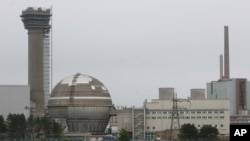At $4.5 BILLION, it only took 20 years to get it into operation – and the technology's already outdated. A lot of this was over safety concerns but most of the delay came from – just plain government interference and regulations.
Read the story @ TVA's New Nuke Plant Shows How Regulation Stifles Clean Energy and TVA's New Nuke Plant Shows How Regulation Stifles Clean Energy by William F. Shughart
Read the story @ TVA's New Nuke Plant Shows How Regulation Stifles Clean Energy and TVA's New Nuke Plant Shows How Regulation Stifles Clean Energy by William F. Shughart



